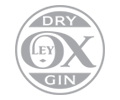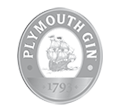We’re rather amazed to find ourselves slightly at odds with such an august body as the Ultimate Spirits Challenge who have produced the following definitions of gin and genever:
Gin & Genever Entry Classifications (6)
- G3000. London Dry Style (juniper dominant)
- G3002. Plymouth Style
- G3004. New World Style (non-juniper dominant)
- G3006. Genever
- G3008. Old Tom Style
- G3010. Other/Organic Gins
On this side of the pond it’s a bit different. Under EU Law there are three styles of gin (genever is covered by separate legislation) :
- London Gin
- Distilled Gin
- Gin
The basis of classification is not by taste but by production methods. So for example both London and Distilled Gins must be made by redistilling spirit with the botanicals in a traditional still. With London nothing can be added after distillation except a small amount of sugar, additional spirit and water to reduce to bottling strength. Typical London Gins are Beefeater and Tanqueray. Yes they may tend to be juniper dominant but both Beefeater 24 and Caorunn Gin are London Gins and they have introduced new and fresher, non juniper flavours.
In the case of Distilled Gin additional flavourings and colouring are permitted after distillation. Typical Distilled Gins are Hendrick’s, Martin Miller’s and London No. 1.
Plymouth Gin is not a different style of gin, it’s made in exactly the same way as London Gin but is always labelled “Plymouth Dry Gin” because it can only be distilled within the city walls of Plymouth, the result of a number of successful court actions in the 1880s to prevent other distillers ‘passing off’ their gins as Plymouth Gin.
Most Old Tom style gins would qualify as Distilled Gins because they have a higher level of sugar.
“Gin” is not worth talking about – it’s the cheap compounded stuff one finds in supermarkets.
In the US According to the Code of Federal Regulations (governed by the Alcohol and Tobacco Tax and Trade Bureau) “Gin” is a product obtained by original distillation from mash or by redistillation of distilled spirits, or by mixing neutral spirits with or over juniper berries and other aromatics, or with or over extracts derived from infusions, percolations, or maceration of such materials. It can include mixtures of gin and neutral spirits. It shall derive its main characteristic flavour from juniper berries and be bottled at not less than 80° proof. Gin produced exclusively by original distillation or by redistillation may be further designated as “distilled”. “Dry gin” “Geneva gin” and “Old Tom gin”. So all bases covered there.
Whilst we applaud the efforts of the Ultimate Beverage Challenge to come up with more rigorous definitions of gin and genever we’re not at all sure if these are quite rigorous enough.
Read more about the Ultimate Spirits Challenge and see the results of this year’s gin judging here.
For the full technical spec on London, Distilled and Gin gins have a look at The Gin and Vodka Organisation website .
And if you really want to bend your brain check out the full legalese here.




